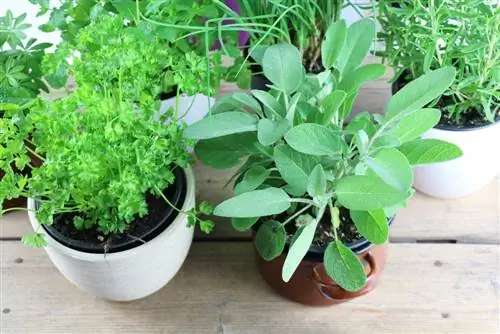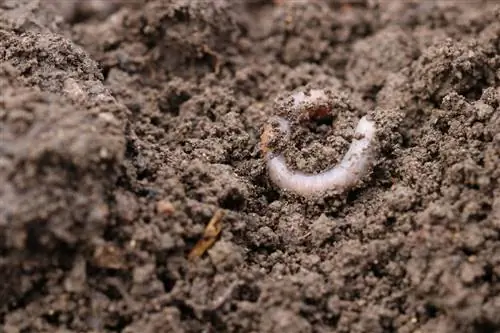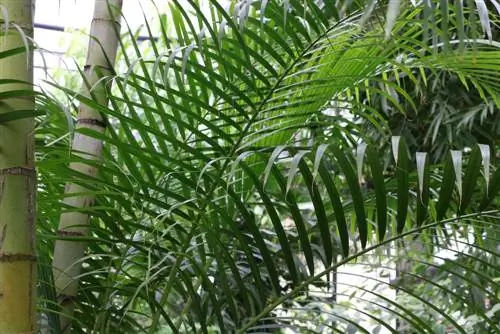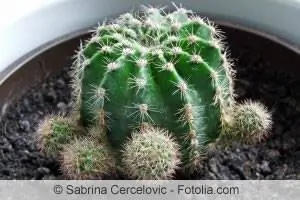- Author admin [email protected].
- Public 2023-12-17 03:39.
- Last modified 2025-01-24 12:45.
Herbs differ greatly not only in terms of their aromas and effects, but also in their requirements for the soil. Not all herbal soil is the same. Different plants have different needs. When choosing herbal soil, it depends on which herbs it is to be used for. And mixing the soil yourself allows for a much more individual result.
Herbal clay
In addition to the right location and optimal fertilization, the planting substrate plays a crucial role in the cultivation of all kinds of herbs. The soil must meet very specific conditions if the plants are to grow and thrive - regardless of whether they are cultivated in the garden or in the flower pot in the home. It's just unfortunate that these conditions sometimes differ significantly. Native wild herbs such as dandelion or sorrel require completely different soil than, for example, thyme, sage and lavender. It is therefore in the nature of things that industrially mixed ready-made soil from the trade cannot really meet the respective requirements precisely. It is designed to cover the widest possible range of herbs. And that may not be optimal for the plants.
Mix it yourself
Against this background, it of course makes sense to mix the herbal soil yourself. In this way you can be sure to create exactly the substrate that the respective plants need. However, it is necessary to know their needs. In principle, these can be reduced to two factors, namely water and nutrient requirements. To make it clearer: Many ready-made herb mixes from specialist retailers or hardware stores have an extremely high proportion of peat, bark mulch or compost, meaning they contain materials that can store water extremely well. Parsley feels right at home in it, Mediterranean herbs don't. When mixing herbal soil yourself, it is important to use the right recipe. Basically the following “ingredients” come into question:
- Garden soil
- Compost
- Peat
- Sand or quartz sand
- Coconut Fiber
- pottery shards

The crucial question is what proportion the individual elements should have. And this question can only be answered if you know the water and nutrient requirements of the respective herbs. As a rule of thumb, herbs with a relatively high requirement also require a high proportion of compost and garden soil, while the proportion of sand can be reduced or even eliminated completely. Mediterranean herbs in particular, on the other hand, require relatively little water and only a few nutrients. The aim here is to increase the amount of sand and do everything we can to ensure that the earth can hardly store any water.
What herbs want
The following overview is intended to give an approximate impression of what the requirements of individual herbs look like in terms of their water and nutrient needs:
Low to moderate need
- Aniseed
- Basil
- Mugwort
- Savory
- Eberraute
- Vervain
- Tarragon
- lovage
- Marjoram
- Oregano
- Rosemary
- Sage
- Thyme
- Lemon balm
Quite high demand
- Wild garlic
- Watercress
- Borage
- Dill
- parsley

The soil for herbs with a rather high need for water and nutrients should always be rich in humus and be able to store water easily. In contrast, herbs with a rather low requirement prefer well-drained, sandy and dry soil.
Standard recipe
Against this background, it should be relatively clear that your own mixture of herbal soil makes sense, especially for herbs that require both few nutrients and relatively little water. This is usually the case with all Mediterranean herbs. The following composition has proven itself:
- 50 to 55 percent garden soil
- 15 to 20 percent compost
- 30 percent quartz sand
The proportions of garden soil and compost can vary. For herbs with an extremely low nutrient requirement, such as thyme or rosemary, the proportion of compost is simply lower than the proportion of garden soil. In addition, it is also advisable to incorporate a so-called drainage into this mixture. This is especially true if the herbs are not to be cultivated directly in the soil in the garden, but in a planter. Drainage reliably ensures that the water can drain away easily and that waterlogging does not form. It usually consists of shards of pottery that are placed at the bottom of the vessel. However, for this to work, the bottom of the vessel must have a drainage hole. It is also advisable to mix the individual components well in order to obtain the loosest possible herbal soil.
Tip:
Instead of quartz sand, other materials such as lava grit, pumice sand or zeolite can also be used. The compost, in turn, can be replaced with a mixture of peat and coconut fiber.
Prepare ready-made mixtures
As mentioned, mixing your own herbal soil is particularly suitable for Mediterranean herbs with low water and nutrient requirements. For all other types of herbs, ready-made commercial mixes can easily be used. These can of course also be used as a basis for your own mix - especially if you don't have access to garden soil and want to grow the herbs in your apartment. You then simply replace the proportions of garden soil and compost with the ready-made mixture and add plenty of quartz sand. A ratio A ratio of 60 to 40 (sand) is ideal. It is also important here to loosen the soil extremely well and thus ensure good ventilation and permeability. Drainage also plays a crucial role.
Special cases

Certain herbs like it quite lush. They need a lot of water and nutrients. Above all, they also thrive wonderfully without specially prepared herbal soil. These primarily include parsley and tarragon. Normal potting or garden soil is completely sufficient for these herbs.
Herbal soil in the garden
In order to be able to prepare the soil in the garden directly into herb soil, you first have to be clear about exactly what soil you have there. If the soil already contains a lot of sand, you can usually avoid adding sand. However, if it contains a lot of clay, the addition of sand and intensive loosening are essential. You should also think about laying drainage, as clayey soil naturally stores water extremely well.






